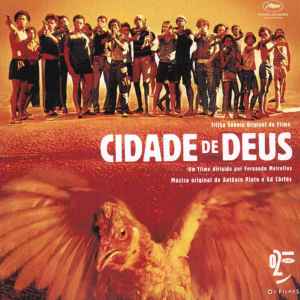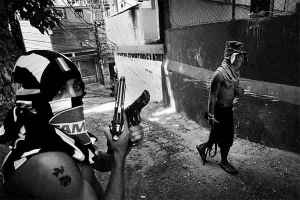Ciudad de Dios
 Based on the Paulo Lins novel, Ciudad de Dios tells of the true story that took place in Ciudad de Dios a favela in Río de Janiero, during the 1960’s to 1980’s. This was at a time when the city was dealing with a struggle for power, corruption and the heightened influx of drugs within the favelas. Ciudad de Dios brilliantly gives the viewer a glimpse into the daily life of a favela. Unseen and forgotten by many, the life of someone living in a favela is besieged with violence, social injustices, corrupted police, politicians, drug trafficking and extreme poverty.
Based on the Paulo Lins novel, Ciudad de Dios tells of the true story that took place in Ciudad de Dios a favela in Río de Janiero, during the 1960’s to 1980’s. This was at a time when the city was dealing with a struggle for power, corruption and the heightened influx of drugs within the favelas. Ciudad de Dios brilliantly gives the viewer a glimpse into the daily life of a favela. Unseen and forgotten by many, the life of someone living in a favela is besieged with violence, social injustices, corrupted police, politicians, drug trafficking and extreme poverty.
The film is divided into six chapters, each depicting the struggle for survival. This survival is not only with life and death but also with choosing either a life of crime or integrity. Most will choose crime, which is the life of power and money. Life will become based on power and control and boys will quickly learn how to command, respect, fear and will even kill in order to survive. The story is told from the perspective of Rocket, a young boy that was born and raised in the favela, but who is too sensitive to join in the violence that surrounds him. Rocket documents his life and the violence that pierces it; through his passion- photography. The viewer is now privy to a community comprised of street gangs, whose members include children and teenagers armed and taking over the favela’s drug trafficking ring.
In his article Labor in the Favelas of Rio de Janeiro, 1940-1969 Julio Cesar Pino, writes that Favelados served their purpose but then were looked on as rotten fruit and discarded. Favelas were formed when hundreds of thousands of farm laborers left the country for the city in hopes of making a better life. However Rio de Janeiro could not incorporate these landless laborers into its urban workforce. Those that did work received wages that were well below the minimum salary. The poor would be forced to build their own residences, and the first favela was in the city of Morro de Providencia.  Squatter settlements could be found on beaches, next to swamps, and railroad stations. Soon they would spread towards the suburbs. Self made housing became an economic necessity for many. Favelas also helped the poor hang on to their rights as citizens. As long as they where in the confines of the Federal District they could apply for city services. Everyone worked, men and women. Pino writes, “Few vagabonds are to be found. Even those who are idle are usually so because infirmities make them incapable of working. They sincerely wish to return to work and will do so as soon as they feel better.” Those that lived in the favelas would be employed as street vendors, construction workers and domestics, and their pay wasn’t near enough to survive on. The film illustrated the contempt society had for favela workers when Rocket was selling fish and the police made him abandon his livelihood. Rocket’s desire to make something of himself was evident from an early age.
Squatter settlements could be found on beaches, next to swamps, and railroad stations. Soon they would spread towards the suburbs. Self made housing became an economic necessity for many. Favelas also helped the poor hang on to their rights as citizens. As long as they where in the confines of the Federal District they could apply for city services. Everyone worked, men and women. Pino writes, “Few vagabonds are to be found. Even those who are idle are usually so because infirmities make them incapable of working. They sincerely wish to return to work and will do so as soon as they feel better.” Those that lived in the favelas would be employed as street vendors, construction workers and domestics, and their pay wasn’t near enough to survive on. The film illustrated the contempt society had for favela workers when Rocket was selling fish and the police made him abandon his livelihood. Rocket’s desire to make something of himself was evident from an early age.
Ney dos Santos Oliveira, wrote that favelas have been subjected to government removal campaigns since their beginning. Overcrowding in the favelas caused cholera and other diseases, and the government reacted by destroying them and displacing the poor. These low-income groups were then forced to settle in areas without roads or other urban amenities. Ciudad de Dios exemplified this lack of urban amenities, as well as the disregard for the people who lived their. Police and other social services did not come into the favelas; they were essentially left to fend for themselves. It was Lil Ze and other thugs that will run the favela and its people with violence, murder and corruption. 
I really enjoyed this film. The director’s decision to use actors from the favela helped to give credibility to the story that would open my eyes to a world that is all to often forgotten by their country as well as the world.
